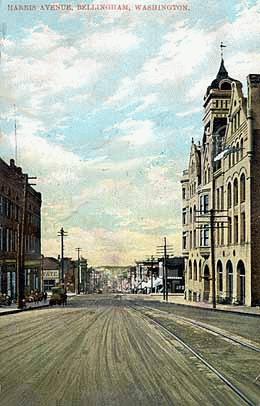On the night of September 4, 1907, about 500 white workingmen attack Bellingham’s East Indian millworkers. The purpose of this “anti-Hindu riot,” according to the Bellingham
Reveille
, was to “move [the Indian workers] on, to get them out of town, and scare them so badly that they will not crowd white labor out of the mills” (September 5, 1907).
At the time of the riot, Bellingham’s lumber mills employed about 250 East Indian workers. Rumors that managers of the Whatcom Falls Mill Company plant had been replacing laid-off white workers with lower-paid Asian workers, along with the news that bunches of “dark-skinned” men had been gathering on the city’s sidewalks after work and forcing female passers-by to walk in the street, had provoked a good deal of resentment.
On September 4, this festering hostility erupted. The riot began when a mob of white men chased and beat two East Indian workers they found on C Street. Then the rioters headed to a boardinghouse where many of the Asian millworkers lived. There, they smashed windows and drove the terrified residents out of bed and down to the tideflats. The marauders went from house to house and from mill to mill, driving every East Indian worker they could find to the tideflats or to the train station. The next day, almost all of Bellingham’s Indian workers fled the city by boat or train.
Bellingham’s leading citizens tried to restore the community’s reputation by condemning the city’s police force (which had responded to news of the rioting at a leisurely pace) and its mill owners (for inviting the “undesirable and unwanted” East Indian workers into the city in the first place). At least one union, the very atypical and more radical Industrial Workers of the World (IWW), announced that it “did not countenance the action against the local Oriental colony, as it did not believe it to be in accordance with the principles of organized labor.” (The views of the IWW did not reflect those of the traditional unions affiliated with the American Federation of Labor [AFL].)
Bellingham's AFL unions remained affiliated with the National Asiatic Exclusion League, which had more than 800 members in Bellingham alone and which proudly declared that it would “guard the gateway of Occidental Civilization [the ports of the West Coast] against Oriental invasion.” Members of the League wrote to President Theodore Roosevelt, warning him that massacres were sure to result if he didn’t do something to curb Asian immigration into the Northwest.
Most of the Indian millworkers (along with the Chinese, Japanese, and Filipino workers who also fled after the riots) never returned to Bellingham.

